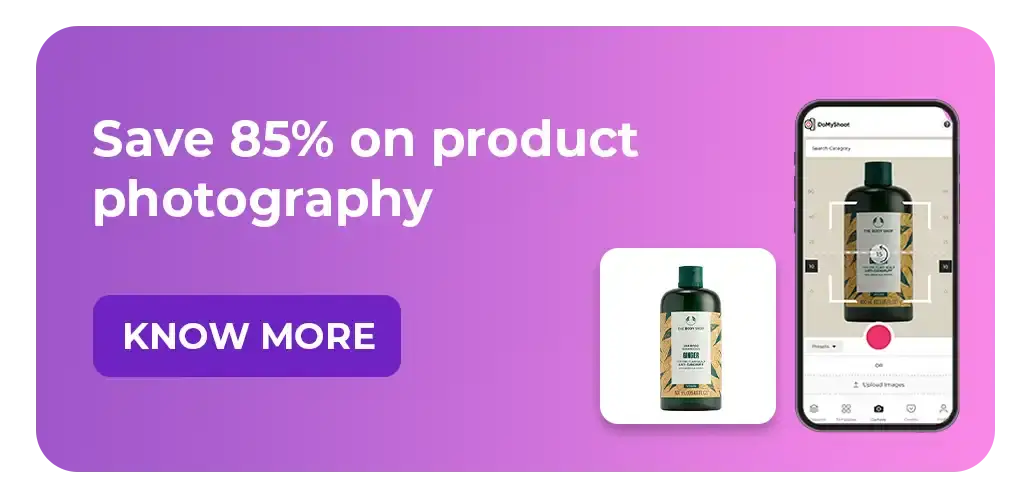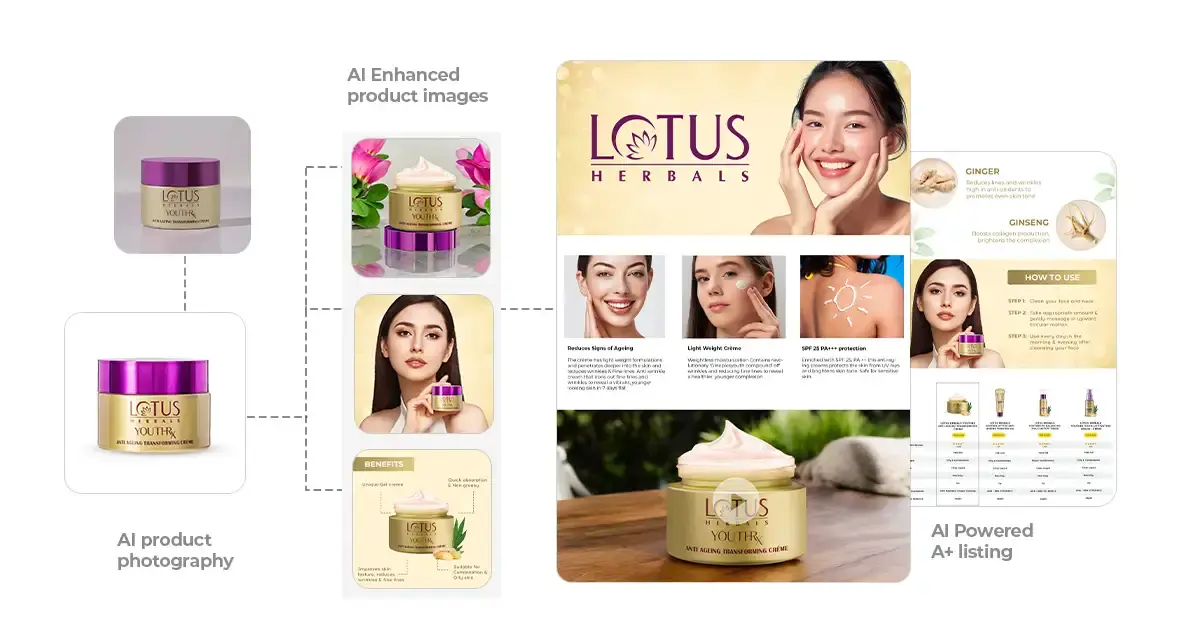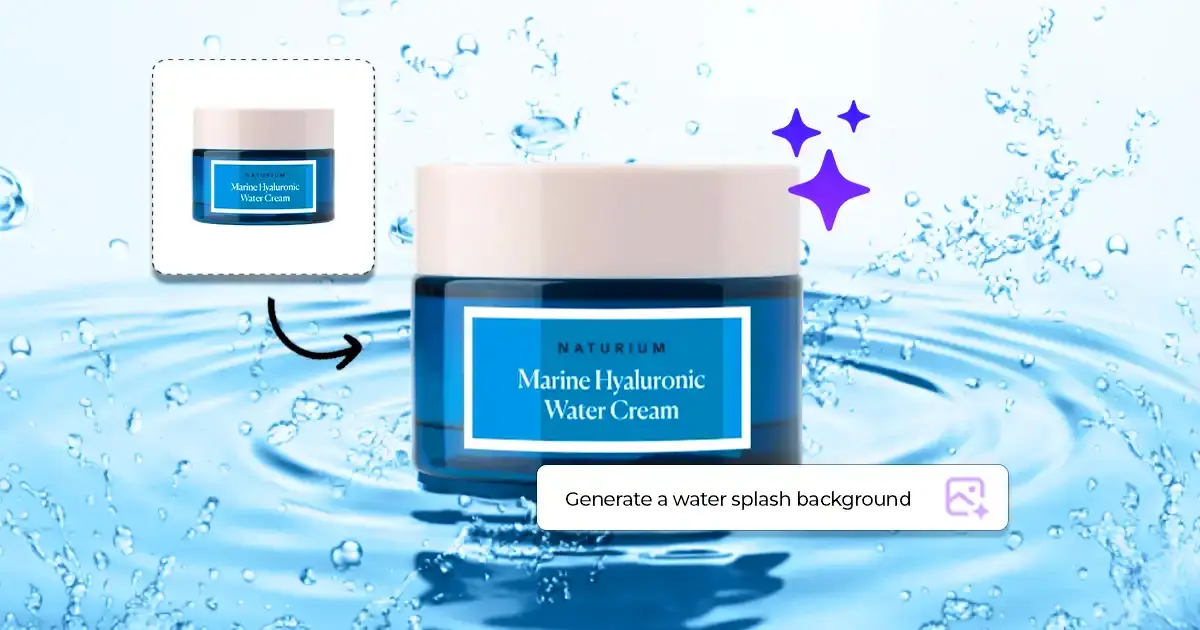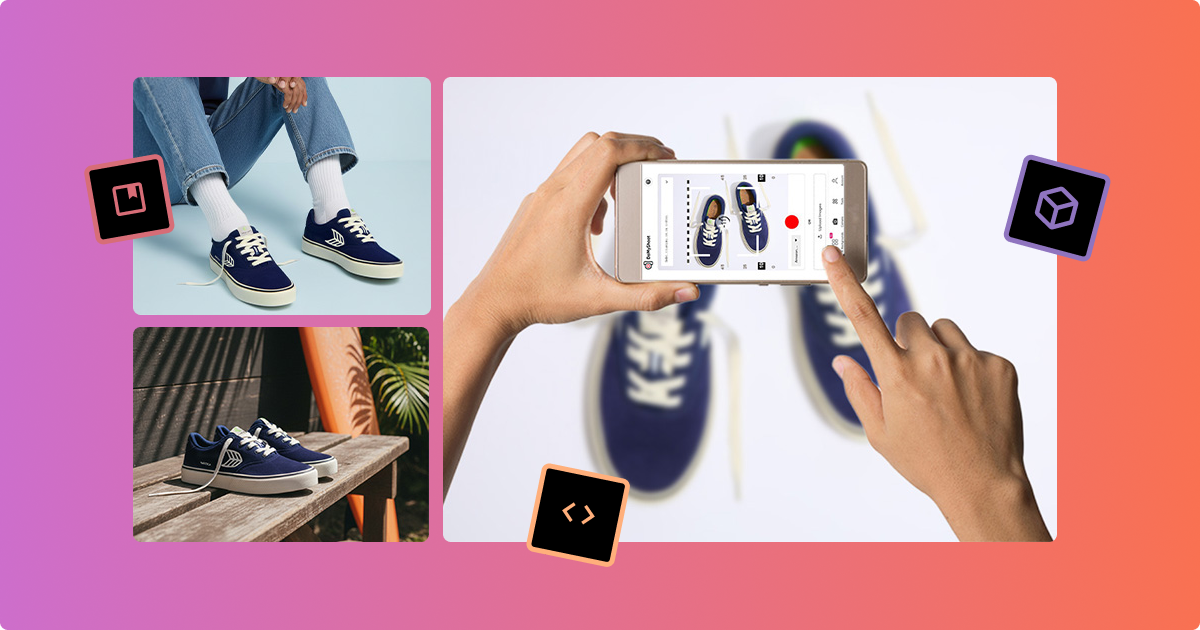In the eCommerce segment, first impressions do mean everything. So, high-quality product photography is no longer a luxury but an absolute necessity. The very first thing that any potential buyer visiting your site will look at is the visual appearance, which influences their decisions to a great degree. However, for far too many sellers, professional-level photographs can be quite a challenge to achieve.
Here comes AI product photography, the ultimate game-changer for eCommerce sellers. With AI changing how we view product photography, it has become easy, efficient, and consistent. Businesses like Dresma have leveraged AI to make it easy for sellers to create studio-quality eCommerce content without needing tons of resources at their fingertips.
Even small businesses can leverage AI to achieve professional-grade product photos that can uplift their product listing.
Benefits of AI Product Photography
Traditional product photography can be riddled with a lot of problems: it's time-consuming and expensive, and often inconsistent. And especially for a small business owner or an independent seller, investment in professional photo shoots (hiring of photographers, renting studios, and then the extensive post-processing) is pretty expensive and time-consuming.
Another common problem is inconsistency across product catalog. The result is that the online store will look less attractive and slightly disjointed.
Let’s have a look to the benefits of AI product photography:
Reduced Costs and Time Savings
One of the biggest advantages of AI in product photography is that it is relatively cheap. Traditional photography was quite expensive, while AI tools brought extreme price cuts to these costs.
Dresma promises up to 85% savings on costs of photography and 10X faster go-to-market time as compared to traditional methods. In this way, sellers have the opportunity to invest resources elsewhere and still maintain high-quality product images.
Scalability and Consistency
Having consistency in product catalog is essential for brand’s credibility and consumer trust. Whether you have a few images or thousands, AI product photography ensures consistency throughout the product catalog.
Increased Sales and Conversions
AI product photography enhances product presentation, improves click-through rates, and raises sales. Dresma’s clients have seen an increase of 35% in sales since they adopted AI product photography.
The increased visual appeal and cohesion that AI product photography brings to a site make products more appealing to prospective buyers.

How AI Product Photography Works?
AI product photography calls for the use of modern algorithms and machine learning to fully automate and enhance efficiency in creating product images. AI analyzes the product and helps in generation of lifestyle backgrounds that complements the image.
Dresma offers mobile and web app solutions for ecommerce businesses. With the mobile app solution - DoMyShoot - sellers can showcase products with high-quality white background and lifestyle settings, without the need for traditional photoshoot setups and props. On the other hand, web app solution - Design Studio - is an all in one platform which helps sellers with the promotional content creation in sync with their brand language.
Different AI Product Photography Approaches
Background Removal

AI can auto detach a product image from it’s background, giving you a clean product that can be placed over any background of your choice. This ensures the same look throughout the product catalog.
Background Color Change

The color of the background can be easily changed to coincide with your brand's feel or even to draw more attention during a particular seasonal sale. This saves time for sellers who are looking to repurpose their content with seasonal changes, or giving their product catalog a fresh look.
White Background

This color is an ecommerce photography staple, showcasing products with no distractions. With the help of AI for product photography, images can effortlessly be placed on a white background, enhancing the product’s color, texture, and details.
Image Resizer

AI image resizer tool can resize images and hold onto the required modification of size for adaptability over multiple platforms and devices without tainting quality. So, your product look perfect on all sorts of devices.
Batch Editor
It is painstaking to make edits on many product images one by one. An AI based batch editor will help you to do that in no time; hence, it saves a lot of time and effort on your end.
AI Backgrounds

AI Background generator uses the power of AI to generate background in just a few seconds for any product category. Every AI generated background is one-of-a-kind that can be unique for every brand. Smart prompts and a powerful AI engine generate imagery that looks custom designed for your brand.
Integrating AI Product Photography in Your Workflow
Product Preparation
Good preparation of your product is essential for the best AI output. Here are a few basic tips to help in product preparation:
- Preparing the product: Products should be clean and free from dust or fingerprints.
- Background: The background has to be very simple and neutral so that the product can stand out easily. We recommend using white/off-white background.
- Lighting: It is also important to have very good lighting. You can use natural light or artificial light to make sure that your product is illuminated properly.
For more DIY product photography tips by smartphone, you can read more.
Choosing Your AI Tool

While selecting the right AI tool, consider free and paid ones.
- Free Tools: These are good for beginners or those looking for basic features.
- Paid Tools: These tools have more advanced features and better support that may be worth an investment.
With high-quality results and an intuitive interface, Dresma’s AI tools have the capability to make your products stand out with detailed finishing. You can start with a free trial, and choose the plan as per your requirements.
Optimizing Your AI-Generated Images
- Cropping: This would adjust the framing and composition to bring the product into focus.
- Brightness/Contrast: Ensure proper adjustments in light and contrast to have the product pop out even more. This gives good visibility to intrinsic features, thereby making the picture look good overall.
These extra edits can then be made to really get as much out of your AI-generated images to make them as efficient as possible in getting prospects and converting those customers.

Common AI Product Photography Mistakes
While integrating AI to automate your content creation workflow, mistakes will definitely take place. Few of such common mistakes are enlisted below:
- Inadequate Image Preparation: Sellers miss to prepare their products before taking pictures.
- Ignoring Lighting Considerations: If the lighting conditions are improper, it may decrease the clarity of the image and can hardly be seen in its full visual effect.
- Low Editing Precision: Desired image results may require manual editing subsequent to AI processing.
Dresma: Revolutionizing eCommerce Content with AI product photography and content creation

Imagine getting high-quality product images for your online store without the hassle and expense of traditional photography. That's the future Dresma is building.
Dresma is an all in one eCommerce content creation platform that leverages the power of Generative AI to empower businesses of all sizes with professional-grade content. Our mission is to democratize the world of eCommerce by making high quality content accessible and affordable to all.
Here's what sets Dresma apart:
- AI-powered content creation: Dresma's platform, built on cutting-edge Generative AI, helps you create high-converting product photos quickly and cost-effectively.
- Proven results: Our technology has already powered over 9 million eCommerce images, leading to a remarkable 60% increase in conversion rates for online sellers.
- Cost-effective solution: Dresma helps reduce content creation costs by 85%, freeing up resources to invest in other key areas of business growth.
- Faster time to market: Products go online quickly with Dresma's efficient solutions boasting a 90% reduction in go-to-market time and offering a competitive edge to customers.
Conclusion
The seller has to always outshine with superlative presentation. AI in product photography comes as a transformation, ensuring you get unparalleled efficacy, consistency, and quality.
Absolutely old and laborious days of traditional photography are gone now. Create engaging visuals easily with the help of AI product photography empowers sellers to make their eCommerce storefront shine over all competition. Leap forward into the future of product photography with Dresma, and kickstart your journey toward brand new heights for any eCommerce business.









